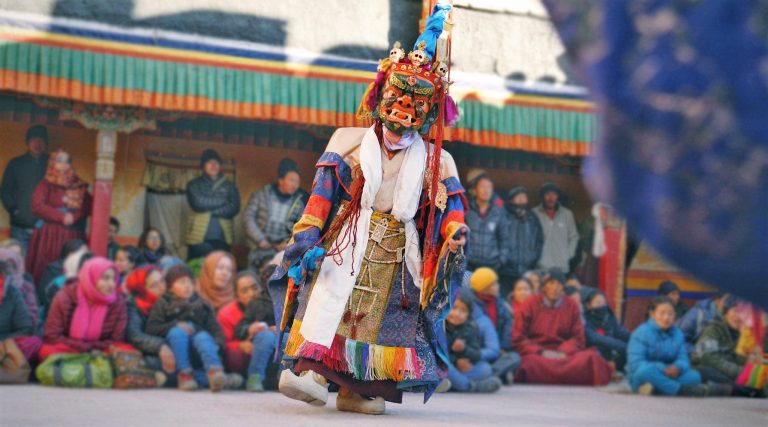Ladakh isn’t just a place—it’s a way of life. Nestled between the towering Himalayas and Karakoram, this high-altitude desert invites you into its monasteries, homes, and hearts. But to truly experience Ladakh, you need more than a checklist of places to visit. You need awareness—of its people, its fragile ecosystem, and the values that define Ladakhi culture.
This guide helps you travel responsibly and respectfully—whether you’re sipping butter tea in a village kitchen, walking through a monastery, or capturing the landscape through your lens.
Ladakhis are warm, soft-spoken, and deeply rooted in community life. Hospitality here is sacred. A guest is always welcomed with a smile—and usually a cup of butter tea or chang (local barley brew).
But there are unwritten rules:
Always accept offerings with both hands—it’s a sign of respect.
Do not enter kitchens uninvited, especially in traditional homes. The kitchen is a sacred space.
Modesty matters. Dress conservatively, especially in villages and around elders.
Don’t interrupt prayer or religious rituals. Wait quietly and observe from a distance if you’re unsure.
These small gestures build trust and deepen your connection with locals.

In monasteries:
Greet monks with folded hands (a soft “Julley” works perfectly).
Never touch a monk’s robes or point your feet toward sacred items.
Move clockwise around prayer wheels or temples unless clearly instructed otherwise.
With elders:
Use respectful greetings—a slight bow with a “Julley” shows humility.
Avoid overly casual or loud conversations near elders, especially in rural areas.
With women:
Ladakhi women are active and vocal in public life, but refrain from physical contact, even for photos, unless there’s consent.
Avoid sitting too close in shared taxis or public spaces unless invited.
These nuances help you avoid unintended disrespect and show that you’re here not just to visit, but to listen and learn.

Ladakh is visually stunning—every corner looks like a postcard. But not everything you see is a photo op.
Always ask before photographing people, especially monks, women, and elders.
Avoid flash in monasteries—it’s distracting and can damage wall paintings.
Don’t drone without permission. Many areas, especially near the border or monasteries, prohibit it.
Be discreet during rituals or mourning ceremonies. Some moments are sacred and not meant to be shared.
A respectful photographer captures the essence without intruding.

Ladakh’s ecosystem is fragile. Every footprint counts.
Do not feed wildlife, especially in high-altitude zones. It disrupts their natural behaviour.
Stick to marked trails while trekking—off-trail movement damages alpine vegetation.
Keep noise levels low near rivers, lakes, and forests to avoid disturbing animals.
Do not touch or climb chortens (stupas) or mani walls (stone prayer walls).
Carry your waste back—even biodegradable items like orange peels harm the terrain at this altitude.
Sacred doesn’t always come with a signboard. When in doubt, observe or ask.

Learning a few words goes a long way. It shows effort and respect.
| Phrase | Meaning |
|---|---|
| Julley | Hello / Thank you / Bye |
| Khamzang ina? | How are you? |
| Khamzang yin | I’m fine |
| Nyerang ming chi inna? | What’s your name? |
| Ngaso…yin | My name is… |
| Mani padme hum | Common Buddhist chant (said with reverence) |
Even a single “Julley” can melt barriers.

Ladakh is not just a destination—it’s a living, breathing culture. When you travel with curiosity, humility, and responsibility, you don’t just take back photographs—you take home stories, friendships, and a deeper connection to the land. Be mindful, be respectful, and let the mountains change you.